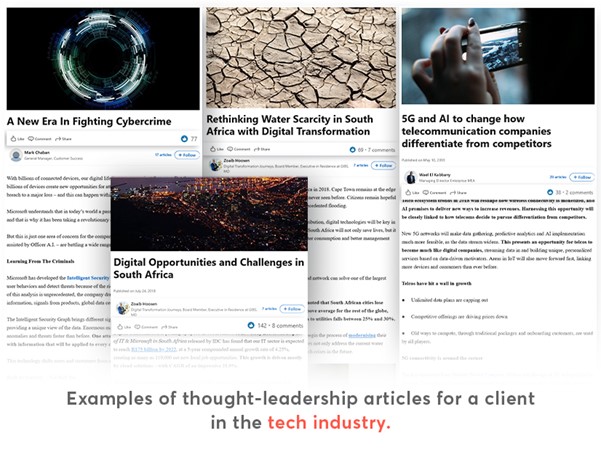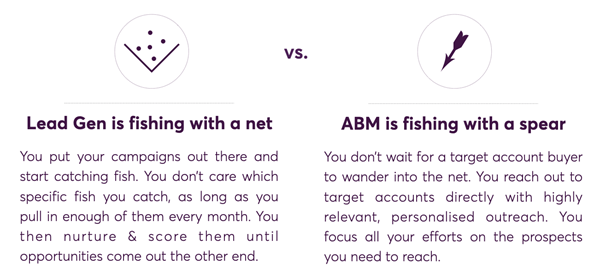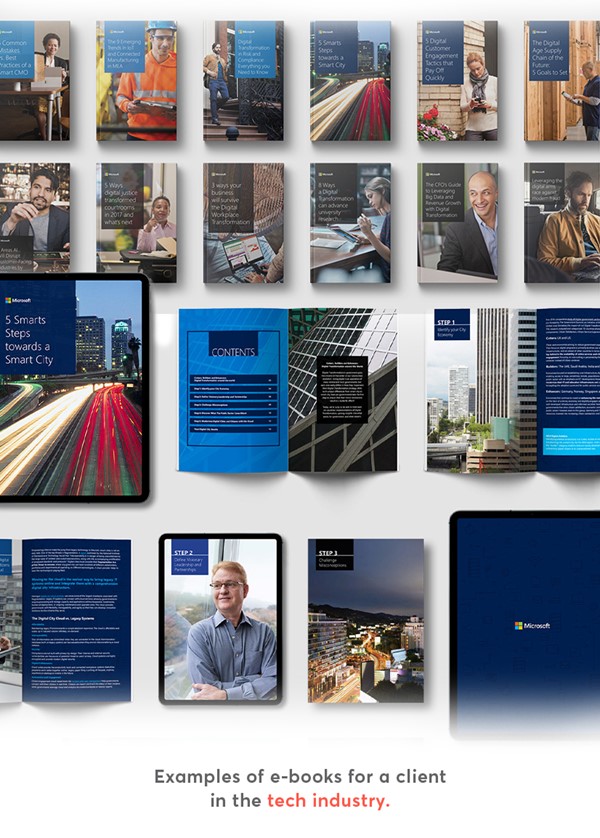Social selling – you may have heard of it, especially now, in times of the pandemic, when many traditional B2B marketing methods are moving online. The term isn’t new, though, and it's been steadily gaining popularity in the last few years.
Since 2017 we have designed, implemented, and managed social selling programmes to help our B2B clients generate opportunities, close more deals, and build brand preference. We have worked with organisations of all sizes – from SMEs to corporations, primarily in the EU and the Middle East & Africa regions. Their social selling teams comprised 3 to 45 participants.
In this post, we'd like to share what we've learned along the way. Our clients mainly operate in the B2B space, so LinkedIn is their natural habitat. That’s why we will focus on this platform here – but our findings apply to other social media, too.
It's quite a long read, so here's what you'll find inside:
What is and what isn’t social selling?
A common misconception about social selling is that it is about posting updates and sending private messages to potential clients. Or, at least, that’s what we often hear when we start our introductory training sessions.
At Clipatize, we define social selling as structured activities of company representatives who use their personal LinkedIn profiles to build brand preference and thus contribute to driving sales.
By becoming the faces of the company, social sellers build familiarity and that much-desired top-of-mind awareness. As a result, your company can become the first name that comes to mind when the customer gets asked an unprompted question about a category, product, or service.
By regularly appearing in the prospect’s newsfeed with educational rather than sales content, social sellers can prepare the ground for future deals and generate demand for the services or products they offer.

To be successful, social selling programmes need to be planned, aim at precisely defined target audiences, and rest on a consistent content strategy. A strategy that focuses on delivering value to your prospects.
So it’s not about inviting random users to your network, posting pushy sales content, or bombarding everyone with your offer. That’s spam, not social selling.
The four pillars of social selling
While there are many approaches to social selling programmes, they usually include these four pillars–and these always underpin our training sessions. Here's how we usually explain them.
![]()
1. Establish a professional brand
The first pillar is about creating a professional personal brand. According to these LinkedIn findings, 81% of buyers are more likely to engage with a salesperson if they have a strong professional brand.
B2B buyers are very selective, so salespeople have to gain their trust. A strong personal brand not only confirms that you actively participate in your industry but also leads to more inquiries and responses from your leads.
A clear unique value proposition is a crucial element of a personal story. That’s why we also support our clients in identifying and communicating it on their LinkedIn profiles.
2. Find the right prospects
The second pillar is about focusing on the right prospects. LinkedIn gives salespeople unparalleled opportunities to find prospects that meet their specific criteria, like particular roles in the industry and region they are interested in. And, as LinkedIn research suggests, almost 80% of buyers are ready to have sales conversations on social media, which can considerably shorten your sales cycle.
That’s why during our training sessions we always demonstrate how to use basic LinkedIn and Sales Navigator options to find the right people.
3. Engage them with insights
The third pillar focuses on engaging prospects with insights. Posting relevant industry content, commenting on news, and sharing valuable insights help build a subject-matter expert's image.
Research confirms that these efforts pay off, as 62% of B2B buyers respond to salespersons that connect with relevant insights. And over 90% of them are willing to engage with sales professionals who have positioned themselves as industry thought leaders.
4. Create meaningful business relationships
And finally, the fourth pillar focuses on creating meaningful relationships. Sharing valuable content, learning more about your prospects, and reaching out to them at the right time help build preference. But again, this step requires focusing on the prospect's needs first, and selling comes second.
It’s all about quality B2B content...
Since social selling is less about sales and more about meaningful conversations, the significance of good content becomes even more evident.
There are many formats you can use to display your thought-leadership and standing in the industry. We usually start with helping our clients to build a steady flow of status updates and extended articles, and gradually add other options.

Video posts are gaining popularity among our clients–and this is for a reason. According to this LinkedIn research, members are 20x more likely to share a video on LinkedIn than any other type of post.
The best B2B videos provide value to LinkedIn members while allowing the seller to share their insights and familiarise the network with their face and humanise the messaging. This format is yet another way to build trust and boost brand awareness through its key representatives' social media presence.
Just have a look at the video on AI maturity in the MEA we produced for one of Microsoft’s top regional leaders.
The content we produce for our clients' sellers includes case studies, checklists, and other assets referring to the questions they get from their prospects. Nearly 64% of B2B buyers appreciate hearing from a salesperson who provides knowledge or insight about their business. By addressing relevant issues in their content, social sellers can shorten the sales cycle.
All pieces are based on personal content strategies and grounded in research into our clients' product, industry, and prospects' needs. The topics and themes we pick always refer to our clients' industries and focus on creating value for their clients.
Our writers cover all relevant issues – from changes in the sector legislation to emerging trends, innovations, and significant developments in their company. Depending on the project needs, our team researches and writes about cloud technologies, digital transformation, mechanical engineering, joinery, or financial services.
Thanks to regular status updates with social sellers, we pick up new issues and developments that should make it to their next content packages. As a result, they get ready-to-use and timely assets that allow them to post regularly and keep appearing in their prospects’ newsfeeds.
It's timely outreach that brings the results
Posting quality content is essential to building top-of-mind awareness, which then often brings inbound inquiries. Articles, updates, and other publications lay the groundwork for a carefully planned and timely outreach to prospects who may be in need of your services.
A great example from our portfolio is the programme we handled for Microsoft MEA. During this time, we created a total of 150 articles, over 1000 personalised posts, and 12 e-books working together with the company's leadership team and general managers.
The thought-leadership content they posted helped to initiate online conversations and received thousands of endorsements and shares. Apart from generating interest, the articles and updates prepared the ground for reaching out and making over 100 F2F appointments with strategic decision-makers in the region. Simultaneously run digital marketing campaigns built around expert content resulted in an additional pool of over 850 leads.
The six most common social selling pitfalls
While easy in theory, in practice, social selling often proves challenging. Here are some of the most common issues we’ve encountered across different companies.
Of course, such challenges are a natural part of the process, so don’t get discouraged just yet! In each case, we suggest tactics that have proved beneficial to overcome related issues.
1. No clear goals
It may seem obvious, but too often have we seen marketers running programmes without clear expectations of what they’d like to achieve with social selling. Setting goals and choosing KPIs is essential, especially that social selling takes time to bear fruit, so you should be able to assess if you’re going in the right direction.
Before you start, you must know if you want to generate leads – and if so, how many? – or mostly raise your brand awareness and how you will gauge your progress. Lead gen metrics typically involve the number of sales calls, opportunities, and deals generated thanks to the LinkedIn channel. Common brand awareness metrics include the number of network connections, followers, content engagement and reach, and Social Selling Index (SSI).
Being clear about your goals and quantifying the results will prove the programme’s efficiency to your management board and gain their trust, support, and future funding.
A word of caution, though. All is not lost even if your post or activities don’t immediately deliver the expected results. The network registers your activity in the newsfeed, which adds to creating brand preference even if no LinkedIn member reacts just yet.
2. Lack of time
Although marketers manage the lion's share of social selling activities, it still requires some effort from the programme participants. And since their daily routines tend to be packed already, adding new activities can prove challenging.
Enlisting a reliable B2B ghostwriter experienced in the topics and formats relevant to your industry can be a great solution. Regularly receiving fresh content, your company’s social sellers will surely make it to the feeds of their clients.
3. Participants have varied levels of digital skills
While some professionals we've worked with had already been quite proficient in LinkedIn, we had to build their profiles and online image from scratch in many cases. This process takes time, space, and resources your company could otherwise use to launch other activities.
When planning your programme, give preference to employees who have already used LinkedIn and are enthusiastic about taking their skills to the next level. Social selling requires continuous efforts to bear fruit, and working with engaged employees will help you reach your expected goals faster.
4. IT environment and equipment restrictions
Social selling requires unrestricted access to the Internet. Surprisingly, this can be a challenge for companies with strict network and equipment protection policies. Some of our clients’ participants faced such limitations and couldn’t proceed with social selling activities on their work computers. Instead, they had to resort to personal phones and laptops, which made the process more time-consuming.
A good rule of thumb is to clear this hurdle and obtain all required permissions in advance. The easier you make it for your social sellers to use LinkedIn, the higher the odds of incorporating new habits into their daily routines.
5. Unexpected factors can shift your team priorities
You can’t predict what’s unexpected and that’s what happened to one of our clients. The aftermath of the coronavirus outbreak meant that their programme participants had to attend to other more immediate priorities. This situation diminished their overall engagement and almost impeded the process of making appointments with their prospects.
Treat social selling as one of your company’s priorities. That’s where having your management’s back is essential, so make sure that they understand and support the programme from day one.
6. Diverging target groups
This challenge may take place, particularly in larger teams. Naturally, programme participants focus on their distinct groups of prospects. However, when these target groups differ too much or belong to completely unrelated segments, your social selling team members may lose the feeling of working toward the same goal.
What helps is to encourage your participants to regularly gather and share their experiences, ideas, and achievements. Even short, 15-minute standup calls can nourish your social selling participants' sense of team spirit and boost their morale.
B2B social selling – the five most important lessons we've learnt
So what are the most crucial things your B2B marketing team should consider before implementing a social selling programme?
1. Run a pilot and start small
Choose simple, specific goals (please make them SMART!) and check if your team can reach them during a pilot.
This could be, for example, training your participants on basic LinkedIn features, completing their profiles, and getting them to add an agreed number of connections. If it works, great, you can proceed to more ambitious goals. If not, think about how you can make it work next time.
Apply the same rule when considering premium tools such as LinkedIn Sales Navigator. Get your participants to polish their profiles up and become familiar with basic features. Once they exhaust these options, you can run a pilot to assess if premium tools support your participants in achieving their goals. Extend your subscription only if you have clear evidence that it works for you.
2. Get your company’s management on board
Once you have a plan in place, present it to your C-suite. They need to be aware of the programme and be clear about the goals you wish to attain as its result. Having them convinced of the idea of social selling, or even better, getting them involved in it, will validate the programme in your employees' eyes.
This backing will allow your social activities to gain the momentum and recognition you’ll need to get even more staff involved in employee advocacy.
3. Promote the programme internally and reward your participants
At its core, employee advocacy is the promotion of an organisation by its team members. Employee advocates generate positive exposure and raise awareness for a brand. They don’t always get involved in social selling, as their roles may not be related to sales in any way. However, they are vital in spreading the word about your brand, solutions, and values. Advocates can exponentially increase the size of your social selling channel’s reach.
In other words, the more of your people get involved, the easier it gets to promote your company’s posts organically– it’s a snowball effect.
Public recognition can encourage staff to engage actively in your social media activities, both as social sellers and advocates. So if they are already doing their bit, it’s vital to make their efforts appreciated. Use internal communication tools, such as the intranet or company newsletters, to inform everyone about the programme, its goals and rules, shared content, and your participants’ achievements.
Don’t just say “thanks” to your top social sellers and advocates, but show appreciation with incentives such as a gift card or a bonus.
4. Maintain a dialogue between sales, marketing, and social sellers
That’s a cliche, we know, but social selling requires teamwork. While it’s mostly marketers who focus on producing social content, salespeople also need to get involved in the process.
First, by providing the input and insights needed to create meaningful messages. Second, by participating in content reviews, to ensure that all produced pieces are correct and in line with their current goals and customer needs. And third, by actively searching for prospects on LinkedIn and reaching out to them when they spot a business opportunity.
Regular status calls with social sellers are essential to keep learning about their needs and the topics they would like to see addresses in the content they get from marketers. Such meetings don't have to be long; even a 15-minute chat can suffice. In the majority of programmes, we meet our clients' participants every 3 to 5 weeks.
5. Seek synergy between social selling and other marketing activities
Social selling can amplify your parallel digital marketing efforts, employee advocacy programmes, or PR campaigns. Careful orchestration of these elements usually pays off quickly, as by sharing brand content, sellers add to raising awareness of their company's activities. At the same time, as their publications pop up in their connections' newsfeeds, their individual SSI scores also go up.
Social selling goes particularly well with account-based marketing (ABM), an increasingly popular B2B approach that relies on long-term activities and communication targeting precisely defined audience groups. To borrow the phrase from Jon Miller, ABM is about fishing with a spear, not a net – and it flips the traditional demand generation funnel on its head.

Instead of waiting for a hundred fish to swim into your net, hoping you'll catch that one fish you want, you focus on that one specific fish from the beginning with ABM. So, in other words, in this approach, you start with identifying the most important opportunities and then go after them.
ABM focuses on adjusting the content to the audience—not only to selected accounts but also specific individuals within that particular company. As a result, it increases pipeline velocity and helps to expand business within current accounts.
Social selling can work along similar lines. As the largest global network of professionals, LinkedIn gives you access to millions of decision-makers in one place. By following and connecting with your selected leads and accounts, you can learn more about their needs and challenges. You can then use this knowledge to come up with the right offer at the right time– and, as a result, close a new deal or maximise the value of existing contracts.
Instead of a conclusion
Should social selling become a part of your B2B marketing mix? Most probably yes, as it can bring numerous benefits companies in our sector shouldn’t miss. From increasing brand awareness to gaining trust and encouraging inbound inquiries, social selling can streamline your efforts and shorten sales cycles.
However, if you want to tap into its advantages, your team should carefully plan the programme but also consider and discuss different scenarios. It may be that your company is perfectly ready for social selling, but it may also not be the best moment to introduce new activities. It’s worth investigating and finding out before investing your time and energy.
We hope you will find our tips helpful in the process of designing and implementing your social selling programme (or not, if you decide that it’s irrelevant to you right now). And if you have any questions, please get in touch. We’ll be happy to talk in detail about how social selling can support you in reaching your business objectives.



